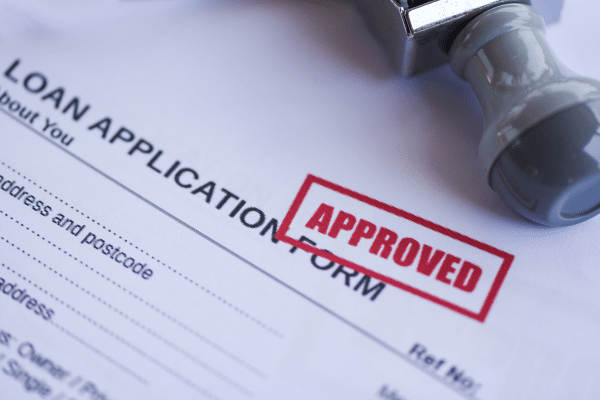Jul 25, 2023
Four common ways fraudsters create fake income documents

When it comes to deceiving lenders, fraudsters have a few tricks up their sleeves. Document fraud poses a significant threat to lenders and financial institutions, as fraudsters continue to employ various techniques to deceive and secure funds under false pretences.
We’re not just talking about identity documents. Fraudsters also target financial documents such as payslips, bank statements, tax assessments (NOA), and business activity statements (BAS).
In this article, we discuss the four most common ways fraudsters create fraudulent documents and provide you with a list of best practices and steps to catch them. This is not an exhaustive list, but these are some of the most common scenarios, starting from the most simple to the most complex.
4 Common Ways to Create Fraudulent Documents
Complete “DIY” for the opportunistic fraudster
The DIY approach to document fraud involves fraudsters attempting to create falsified documents from scratch using basic software (such as Microsoft Office, Google Docs, Apple Pages, etc). In the past this sort of software required expensive licenses – however now it’s free to create an account and start authoring.
While these documents may not be as polished as template-based or professionally made ones, they can still deceive the unsuspecting human eye, which may not scrutinise the documents thoroughly.
DIY document fraud is a simple and cheap method available to anyone with basic skills in design and forgery.
Fake templates
Fraudsters can easily access ready-made templates that resemble authentic documents. With a few modifications, such as altering personal details, transactions or financial figures, they can create fraudulent documents that appear genuine at first glance. These templates can be found on websites that specifically cater to such illicit activities, posing a significant threat to lenders who rely on document verification.
Give it a try for yourself:
- Try a Google search for “CBA bank statement template word”
- “Editable payslip template Australia”
- … or check out verif tools or fake-tools.com which have a selection of document templates which can be purchased and even fully authored “as a service”
Document hijack
Sophisticated image editing software, like Acrobat, Photoshop, even MS Word, provide fraudsters with the tools to alter and manipulate digital documents.
In minutes, fraudsters can modify key details such as income figures, account balances, or transaction history, creating documents that appear authentic. Without advanced verification techniques or comprehensive document analysis, it’s easy to unknowingly accept fraudulent documents as genuine.
Real document but not genuine…
This method involves fraudsters using common software such as Xero, MYOB and Reckon to make authentic payslips, which are related to unauthentic accounts – ie. signing up for a free Xero trial and using this to create a couple of payslips.
We’re seeing more and more of these examples in circulation every month.
Detecting fraudulent income documents
While it is possible for fraudsters to create convincing-looking fake payslips or bank statements, there are often subtle indicators that can help alert trained professionals to their fraudulent nature. These indicators include:
1. Formatting discrepancies
Fraudulent documents may display formatting inconsistencies, such as variations in font styles, sizes, or alignments. Pay attention to the overall layout and design, as legitimate documents usually have a consistent and professional appearance.
2. Logo and branding
Check the accuracy of logos, company names, and branding elements on the document. Fraudsters may use low-resolution images or incorrect variations of logos, which can be a red flag. Legitimate payslips and bank statements typically feature high-quality logos and accurate branding.
3. Grammar and spelling errors
Fraudulent documents can be riddled with grammar and spelling mistakes. Carefully review the text for any language errors, as authentic payslips and bank statements are generally error-free and professionally proofread.
4. Unrealistic figures
Fraudsters may attempt to inflate income figures or bank balances to create a more favourable financial picture. Scrutinise the numbers provided, comparing them with industry standards or previous records to identify any suspicious anomalies.
5. Lack of supporting details
Authentic payslips and bank statements usually contain additional details, such as transaction descriptions, pay period information, or employer contact details. If these supporting details are missing or incomplete, it could indicate a fraudulent document.
This manual document verification process is time-consuming and not always accurate when performed by a human. Some fraudulent documents may be exceptionally well-made and difficult to identify. This highlights the need for lenders and financial institutions to employ advanced verification techniques and utilise sophisticated fraud detection technologies like Fortiro to mitigate the risks associated with document fraud.
Fortiro Protect is an advanced fraud detection system that utilises cutting-edge technology to quickly identify fraudulent income documents in less than 30 seconds.
By staying vigilant, utilising advanced verification techniques, and leveraging technology-driven solutions, lenders and financial institutions can strengthen their defences against document fraud and protect themselves from financial losses and reputational damage.
Get a demo today
Get a demo of Fortiro’s income document verification platform to see how it can help you.


